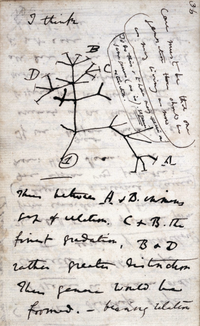
Photo from wikipedia
All animals have evolved solutions to manage their genomes, enabling the efficient organization of meters of DNA strands in the nucleus and allowing for nuanced regulation of gene expression while… Click to show full abstract
All animals have evolved solutions to manage their genomes, enabling the efficient organization of meters of DNA strands in the nucleus and allowing for nuanced regulation of gene expression while keeping transposable elements suppressed. Epigenetic modifications are central to accomplishing all these. Recent advances in sequencing technologies and the development of techniques that profile epigenetic marks and chromatin accessibility using reagents that can be used in any species has catapulted epigenomic studies in diverse animal species, shedding light on the multitude of epigenomic mechanisms utilized across the evolutionary tree. Now, comparative epigenomics is a rapidly growing field that is uncovering mechanistic aspects of epigenetic modifications and chromatin organization in non‐model invertebrates, ranging from octopus to sponges. This review puts recent discoveries in the epigenetics of non‐model invertebrates in historical context, and describes new insight into the patterning and functions of DNA methylation and other highly conserved epigenetic modifications.
Journal Title: BioEssays
Year Published: 2022
Link to full text (if available)
Share on Social Media: Sign Up to like & get
recommendations!